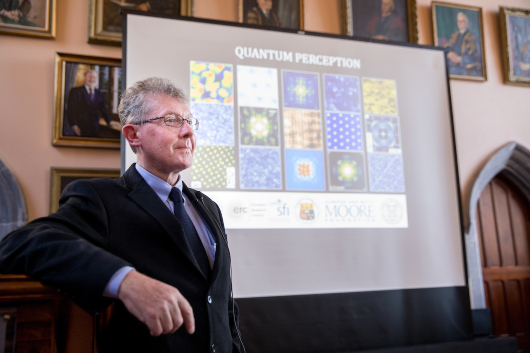Breakthrough in the superconductor race

A breakthrough in the worldwide race to discover higher temperature superconductors has occurred, through jointly co-authored University College Cork (UCC) research.
Superconductors are quantum materials that are perfect transmitters of electricity and electronic information. Although they form the technological basis of solid-state quantum computing, they are also its key limiting factor because conventional superconductors only work at temperatures near -270 C. This has motivated a worldwide race to try to discover higher temperature superconductors.
Materials containing CuO2 crystal layers (cuprates) are, at present, the best candidate for highest temperature superconductivity, operating at approximately -120 C. But room temperature superconductivity in these compounds appears to be frustrated by the existence of a competing electronic phase, and focus has recently been on identifying and controlling that mysterious second phase.
Superconductivity occurs when electrons form pairs of opposite spin and opposite momentum, and these “Cooper pairs” condense into a homogeneous electronic fluid. However, theorists have realized that these electron pairs might also crystallize into a “pair density wave” (PDW) state where the density of pairs modulates periodically in space. Intense theoretical interest has recently emerged in whether such a PDW is the competing phase in cuprates.
To search for evidence of such a PDW state, a team led by Prof. JC Séamus Davis (University College Cork & University of Oxford) and Prof. Andrew P. Mackenzie (MPI CPfS, Dresden) with key collaborators Dr. Stephen D. Edkins (Cornell University), Dr. Mohammad Hamidian (Cornell University) and Dr. Kazuhiro Fujita (Brookhaven National Lab.), used high magnetic fields to suppress the homogeneous superconductivity in the cuprate superconductor Bi2Sr2CaCu2O8.
They then carried out atomic-scale visualization of the electronic structure of the new field-induced phase. Under these circumstances, modulations in the density of electronic states containing multiple anticipated signatures of a PDW state were discovered. The phenomena are in detailed agreement with theoretical predictions for a field-induced PDW state. This implies that it is a pair density wave state which competes with superconductivity in cuprates, and that this state dominates the high magnetic field regime thereof.
This research was funded by the Gordon and Betty Moore Foundation’s EPiQS Initiative. The discovery makes it clear that, in order to optimize and utilize highest temperature superconductivity in the cuprates, this exotic PDW state needs to be explored and understood. This research is publised in Science today.
